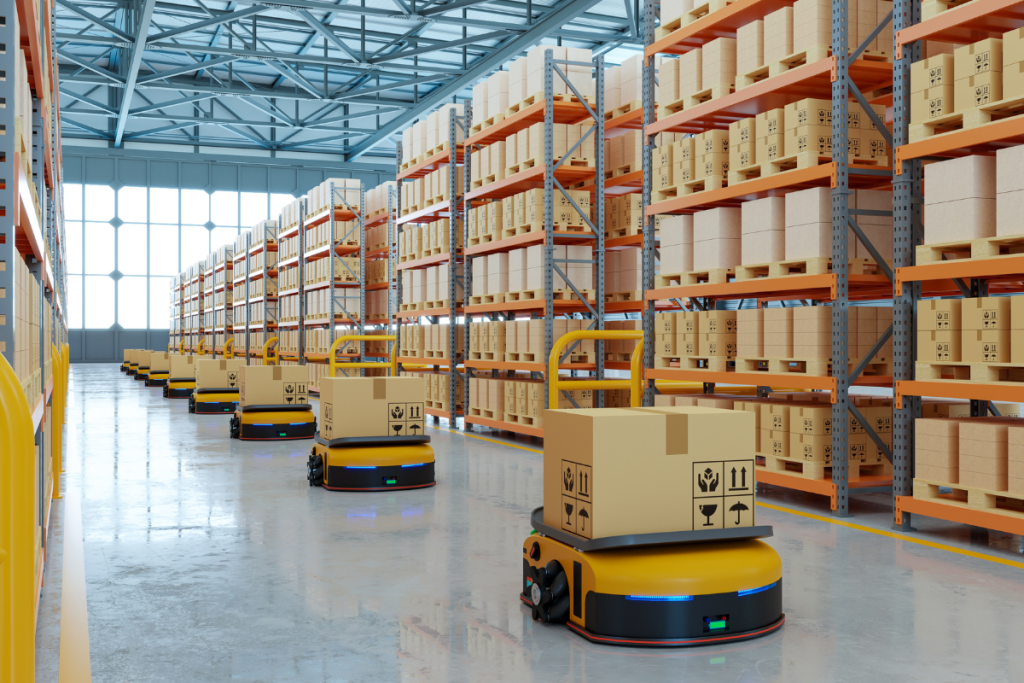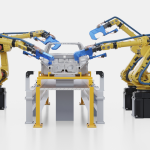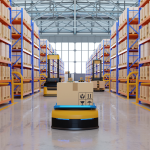Zebra Technologies has launched three automation solutions designed to streamline warehouse and manufacturing operations. The tools underscore a broader industry shift from fragmented automation to coordinated, modular systems aimed at improving throughput, precision, and asset utilization.
Zebra Focuses on Deployment
As warehouse automation matures, companies are shifting focus from deploying more robots to ensuring those robots work efficiently with people and processes. Zebra Technologies’ latest product suite addresses persistent gaps in deployment, integration, and system coordination.
The Aurora VGR Assistant adds machine vision and robot guidance capabilities to Zebra’s existing Aurora Design Assistant platform. It allows manufacturers to configure collaborative robots for tasks like machine tending or part placement without using separate systems for vision and motion planning. The result is lower integration time and fewer external support requirements—key benefits in environments with frequent changeovers or limited engineering resources.
Symmetry Fulfillment, Zebra’s second launch, rethinks autonomous mobile robot (AMR) utilization. Rather than tying each robot to a single cart, the system enables shared use across tasks. Workers can load and unload carts independently of robot movement, increasing fleet productivity and reducing the number of AMRs needed by up to 30%. The solution combines robot fleet management with warehouse execution software and wearable tech for task coordination—an approach tailored to high-SKU, variable-demand operations.
Zebra’s third release, the AltiZ 4200 3D profile sensor, brings higher resolution and speed to quality control inspections. Designed for electronics and automotive manufacturing, the sensor enables precise defect detection in constrained spaces where accuracy is critical and error margins are low.
Orchestration Becomes the Deciding Factor
These products reflect a broader market trend: automation systems are only as effective as the workflows they support. Companies that once focused on adding hardware are now focused on ensuring interoperability across devices, software, and frontline tasks.
Symmetry Fulfillment, in particular, addresses a growing issue – many AMR deployments fail to deliver ROI because they’re not well integrated with worker processes or warehouse layouts. By decoupling the robot from the cart and layering in analytics, Zebra is aiming to deliver more value from smaller fleets, an attractive proposition as capital discipline becomes a priority.
Still, execution remains the determining factor. Vision systems like Aurora VGR and AltiZ 4200 offer simplicity in setup, but optimal performance still requires technical oversight. AMR strategies must align with labor models and facility design. And while Zebra’s software stack promotes integration, the benefits will vary depending on how well customers can align physical and digital operations.
A Measured Step Toward Scalable Automation
Zebra’s latest automation tools are less about new hardware and more about fixing the broken links in deployment and orchestration. For operations leaders tasked with scaling automation under tighter cost scrutiny, this focus on orchestration offers a more grounded path forward.
The coming challenge will be operational, not just technical. As automation systems mature, their success will be defined by how seamlessly they fit into the broader flow of warehouse and production processes. Leaders looking to maximize automation outcomes will need to prioritize interoperability, workforce readiness, and real-time responsiveness, areas where tools like Zebra’s can provide a foundation.







